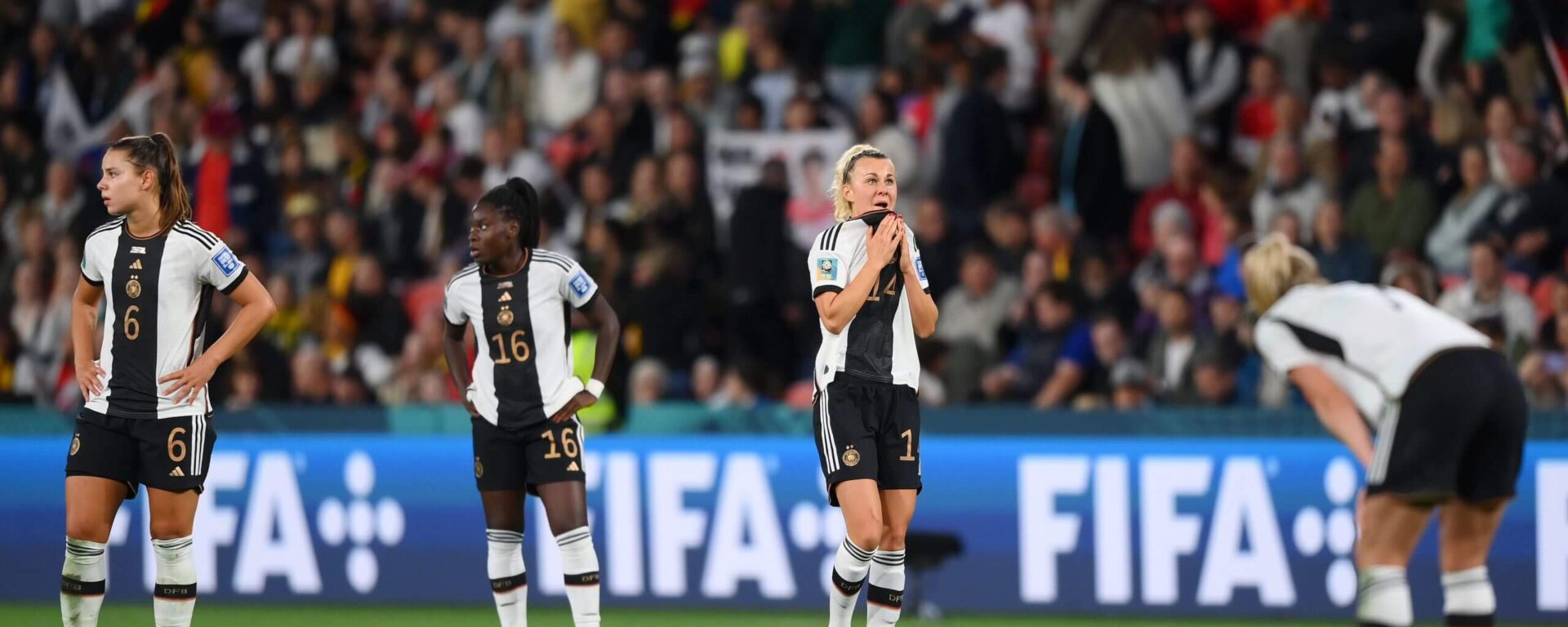
Several established stars are no longer around and there is a good chance Germany’s starting XI will feature no outfielders over the age of 28. Nevertheless, this is a good squad with an impressive array of speedy attackers.
Who is the manager?
A promising attacking midfielder who represented Germany’s under-21s in the early 1990s, Christian Wuck’s career was affected by injuries and he retired before he turned 30.
After starting his managerial career in men’s football at Rot Weiss Ahlen and then enduring a difficult period in charge of Holstein Kiel, he changed tack and spent over a decade working with Germany’s youth sides, and took over the senior women’s team after they had earned a bronze medal at last year’s Olympic Games. Although this is his first coaching job in women’s football, he spent the 2019 World Cup working as an analyst.
How do they play?
At their best, Germany produce fantastic football. They have serious quality in the final third: quick, inventive players who can dribble past opponents on the break and combine in tight spaces. They are also one of the few sides who field two prolific central attackers. They defeated England 4-3 at Wembley last year, constantly dragging the English defence to one side before switching play and breaking down the other flank. Expect Germany’s games this summer to be exciting and full of goals.
Who are their three most influential players?
Captain Giulia Gwinn is one of the outstanding full-backs in Europe, bringing technical quality and attacking bursts down the right.
But Germany’s real area of strength is the front two. Lea Schuller is a classic penalty-box striker who has scored 52 times for Germany, including 20 since the last World Cup. Behind her, Laura Freigang is a clever, elusive No 10 who thrives by breaking forward into the box to meet crosses, taking advantage of Schuller occupying defenders to pop up unannounced and finish smoothly. An incredibly consistent performer in German league football, this could be the tournament when she explodes into an international superstar.
What is their biggest strength?
Familiarity, for various reasons. In Germany’s six-game Nations League campaign between February and June, Wuck selected a fairly consistent starting XI. His players are chiefly drawn from Bayern Munich, Wolfsburg and Eintracht Frankfurt. Many of the players have risen through Germany’s youth ranks together. And, more than most other sides at this tournament — apart from, perhaps, Spain — there is an obvious identity to the side, based on efficiency at transitions and attacking with speed.
What weakness might other teams be able to exploit?
The defensive positions. Left-back Sarai Linder has spent the past couple of seasons playing that role for Wolfsburg, but she was previously used as a right-back or a midfielder, and is very much right-footed. The desperation to find a left-footed option means Bayern 20-year-old Franziska Kett has often been deployed there, but she emerged as an attacker, and using her in defence against top-quality opposition would be a risk.
Meanwhile, centre-back Janina Minge played in midfield for Wolfsburg for much of last season — and indeed at the Olympics last summer. Her most likely partner, Rebecca Knaak, has played the majority of her football either in midfield or as part of a three-person defence.
None are bad players, but given Gwinn’s attacking nature on the right, you wonder whether Germany have the rugged, old-school defensive qualities that a tournament-winning side usually offers.
Any notable absentees?
Tough-tackling defensive midfielder Lena Oberdorf was named as the young player of the tournament at the Euros three years ago, but after suffering an anterior cruciate ligament injury last July, she has missed an entire year of football and will not feature this summer. Given Germany’s issues at the back, her absence is a big blow.
In all, it feels a very different side from the one that experienced such disappointment in Australia two years ago — legendary striker Alexandra Popp, fellow attacker Svenja Huth, midfielders Lina Magull and Melanie Leupolz, defenders Marina Hegering and Sara Doorsoun, and goalkeeper Merle Frohms have all retired from international duty.
What is their strongest starting XI?
How have they performed over the past 12 months?
Pretty well. Germany topped a relatively weak qualifying group, although there was a surprise 3-0 loss away in Iceland, and it took until their sixth and final game to keep a clean sheet. In this year’s Nations League, they drew 2-2 away in the Netherlands, then won five on the bounce.
What are they expected to achieve at these Euros?
With their history in this competition, Germany always believe they are a contender, and are likely to progress to the quarter-finals. They would, however, then meet a side from Group D (France, England, the Netherlands and Wales), clearly the toughest in the competition. At that point, their defensive weaknesses might be exposed.
Did you know?
Germany have good recent memories of playing in Switzerland — they thrashed the Euro 2025 hosts 6-0 in a November friendly at the Letzigrund in Zurich. They will return to that stadium for the final group game, against Sweden, after playing matches in Basel and St. Gallen, both located very close to their own country.
This article originally appeared in The Athletic.
Germany, UK Women’s Football, Women’s Euros
2025 The Athletic Media Company
